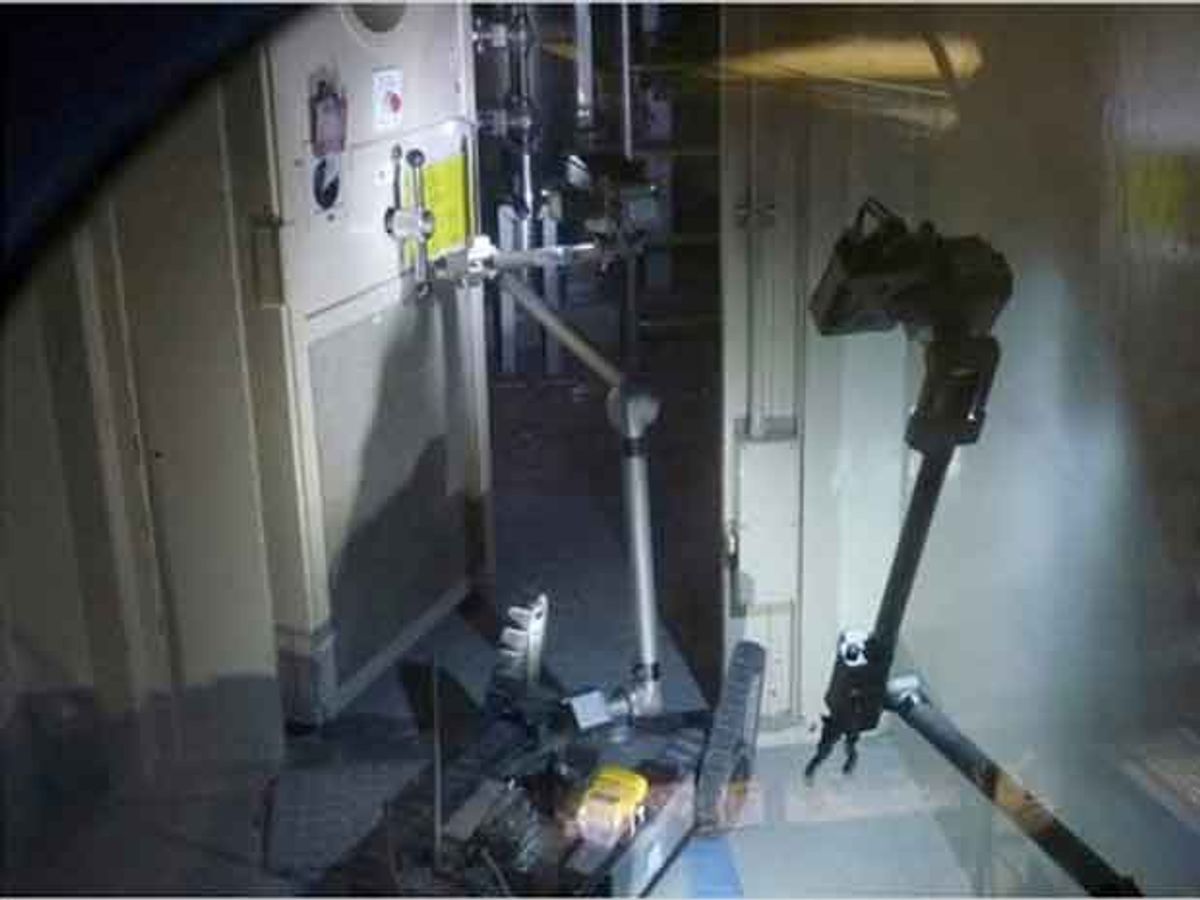This is part of IEEE Spectrum's ongoing coverage of Japan's earthquake and nuclear emergency.
UPDATE 4/20: Watch videos of the PackBots inside the reactors.
The Associated Press is reporting that two PackBot ground robots from iRobot have entered Unit 1 and Unit 3 of the crippled Fukushima nuclear power plant and performed readings of temperature, oxygen levels, and radioactivity.
The data from the robots, the first measurements inside the reactors in more than a month since a massive earthquake and tsunami damaged the plant, revealed high levels of radioactivity -- too high for humans to access the facilities.
The remote-controlled robots entered the two reactors over the weekend. Details of the mission -- such as what areas of the reactors the robots inspected and from where they were operated -- are still scarce, but Tokyo Electric Power Co. (TEPCO), the plant's operator, said that the robots opened and closed "double doors and conducted surveys of the situation" inside the buildings.
From the AP report:
The robots being used inside the plant are made by Bedford, Massachusetts, company iRobot. Traveling on miniature tank-like treads, the devices opened closed doors and explored the insides of the reactor buildings, coming back with radioactivity readings of up to 49 millisieverts per hour inside Unit 1 and up to 57 millisieverts per hour inside Unit 3.
The legal limit for nuclear workers was more than doubled since the crisis began to 250 millisieverts. The U.S. Environmental Protection Agency recommends an evacuation after an incident releases 10 millisieverts of radiation, and workers in the U.S. nuclear industry are allowed an upper limit of 50 millisieverts per year. Doctors say radiation sickness sets in at 1,000 millisieverts and includes nausea and vomiting.
iRobot, which had sent two PackBot 510 robots and two Warrior 710 robots to Japan last month, was one of several organizations providing robotic help to the Japanese authorities. Known as a robotics superpower, Japan has relied on robots from other countries because its own machines haven't been as extensively tested as robots like the PackBots, widely used in Iraq and Afghanistan.
TEPCO officials said that the radiation data from the robots don't change their plans for shutting down the plant by the end of this year. And though more robots will be used, a TEPCO official, Takeshi Makigami, said that robots are limited in what they can do and eventually "people must enter the buildings."
Indeed, the Fukushima disaster is a major test for what robots can and cannot do, and some observers have criticized the fact that better, more advanced robots aren't available to deal with this type of problem. Robots might be capable of navigating inside the reactors and assessing their environments, as the PackBots did, but they probably won't be able to perform major repairs and clean-up work -- just the kind of job we'd expect robots to do.
UPDATE 4/18: The AP has filed another report with more details, but some of the new details are confusing. Though the AP reported previously that the robots made measurements inside Unit 3, the new report quotes TEPCO officials saying that the robot "was impeded by broken chunks of ceiling and walls blown off during hydrogen blasts." So where does the Unit 3 radioactivity data come from?
Then there's this:
TEPCO spokesman Shogo Fukuda said the company has only now begun using the robots because it took several weeks for crews to learn how to operate the complex devices.
It's puzzling that in the midst of the worst nuclear disaster since Chernobyl, TEPCO decided to spend so much time training their workers to operate the PackBots. I'd think that there are qualified PackBot operators for hire, from iRobot or other company, which means the robots could have gone inside weeks ago. Isn't time a crucial issue in this disaster?
But there's more:
So far, just one of the two provided PackBots has been used, said Minoru Ogoda, an official with Japan's Nuclear and Industrial Safety Agency, which is monitoring TEPCO's remediation efforts.
Hmm. Look at the photos (especially this one) and you can clearly see that there are two robots there, and they look very similar, so how is it possible that just one of two PackBots has been used? Either this TEPCO spokesman is confused or there's something lost in translation.
And more:
TEPCO spokesman Shogo Fukuda said the company hadn't anticipated using robots in the power plant until they were offered by iRobot.
Very strange that a company the size of TEPCO didn't think of using robots following the disaster and that, rather than seeking help with robots, it had to wait until robots were offered to them. Again, either this spokesman is misinformed or this report is inaccurate. Otherwise this would mean a huge lack of judgement on TEPCO's part for not seeking robots faster when this disaster hit.
What do you think?
More images:
Packbot working inside Unit 3 (photos taken 17 April 2011)
UPDATE 4/18: The robots have entered Unit 2 as well, and TEPCO has released new photos of the robot and what it found inside the buildings.
1st Floor, Unit 1 (photo taken 17 April 2011)
1st Floor, Unit 2 (photo taken 18 April 2011)
1st Floor, Unit 3 (photo taken 17 April 2011)
Images: TEPCO
Erico Guizzo is the director of digital innovation at IEEE Spectrum, and cofounder of the IEEE Robots Guide, an award-winning interactive site about robotics. He oversees the operation, integration, and new feature development for all digital properties and platforms, including the Spectrum website, newsletters, CMS, editorial workflow systems, and analytics and AI tools. An IEEE Member, he is an electrical engineer by training and has a master’s degree in science writing from MIT.










